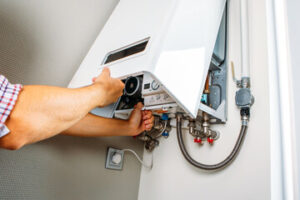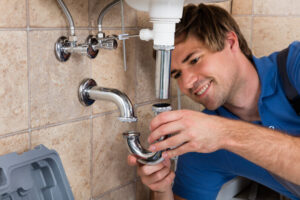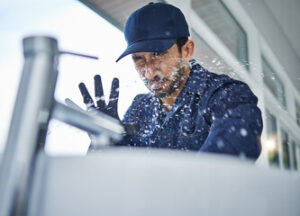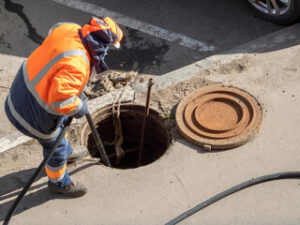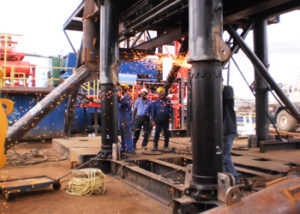When a plumbing disaster occurs, you need a plumber who will be available quickly to fix it. This will prevent further damage and reduce your stress levels.

When calling an emergency plumber, explain what the problem is as clearly as possible. This will help them find the cause of the issue faster and avoid band-aid repairs that could lead to further problems.
During a plumbing emergency, every minute counts. If you wait too long to call an emergency plumber, the damage could worsen or even threaten your safety and well-being. Emergency plumbers are trained to respond quickly and efficiently, minimizing damage and safeguarding your property. They also have the proper equipment and tools to handle dangerous situations, such as gas leaks. By working quickly and addressing the problem right away, they can also save you money on repairs and prevent further damage to your home or business.
Because plumbing emergencies happen at all times, including weekends and holidays, emergency plumbers are available to help you any time of the day or night. This means you won’t have to worry about getting stuck in your bathroom or dealing with the stress of a flooding kitchen.
A good emergency plumber will be able to come to your aid quickly and offer you a wide range of services, from installing toilets and showerheads to repairing sewer lines and water tanks. They will be able to provide you with a thorough inspection of your pipes and drains, identifying any potential problems before they become a crisis. They will then be able to recommend the best solution and implement it promptly.
If you’re unsure which emergency plumber to choose, it’s best to research your options before an emergency arises. You can look for customer reviews and compare prices online to find the best option for your needs. Make sure the plumber you hire is licensed and insured in your area and has a good track record of customer satisfaction.
You should also ask about their response time and how far they’re willing to travel to reach your home in the case of an emergency. You can also reduce your risk of an emergency by taking precautionary measures, such as ensuring that all family members know where the shut-off valves for water and gas are located so they can turn them off in an emergency. Also, by regularly draining outdoor spigots and making sure your drain traps are empty, you can avoid some common plumbing emergencies like frozen or burst pipes.
Prevent Further Damage
A plumbing emergency can happen at any time, and it’s important to have someone available who can respond quickly. Emergency plumbers can help minimize damage and costs by addressing the problem immediately. This may include repairing or replacing broken fixtures, cleaning up water damage, and preventing further problems.
Aside from a pipe burst, other emergency plumbing issues may include toilets that overflow or back up, leaking faucets, and more. Some of these problems can be fixed with the right tools and equipment, while others require the expertise of an emergency plumber to tackle.
While these emergency situations can be stressful, there are a few things you can do to prepare for them. For example, if you notice that a toilet or drain is clogged, try using a plunger to clear the blockage. If this doesn’t work, you can turn off the water supply to the affected fixture and use buckets or towels to contain any excess water.
Another thing you can do is to assemble an emergency plumbing kit. This kit should contain items like wrenches, plumber’s tape, and rags to clean up any excess water. You can also keep a wet-dry vacuum on hand to remove excess water from hard-to-reach areas. In addition, having a list of emergency plumbers in your area can be helpful, as well as knowing what to expect when you call them for assistance.
Once you find a 24-hour plumber, make sure to ask for references from previous customers and read reviews online. This will help you find a plumber with the right experience to handle your emergency plumbing needs. It’s also important to look for signs that a plumber is qualified, including certifications, licenses, and insurance. Angi connects you with plumbers who are highly trained and experienced in handling a wide range of plumbing services.
In addition, an emergency plumber should provide advice on prevention and maintenance to protect your home from future plumbing problems. This can include tips on how to maintain your plumbing system, recommended products for your home, and a schedule for routine checks. A plumber who offers these additional services shows that they care about their clients’ wellbeing and are committed to providing high-quality workmanship.
Save Money on Repairs
When your toilet is overflowing, sink leaking, or pipes are bursting, you can’t afford to wait for regular business hours. An emergency plumber will come out to your home quickly and get the problem fixed right away. This can save you the cost of water bills, property damage, and stress in the long run.
When searching for a plumber, you should consider their credentials, response time, and cost transparency. You should also ask about their experience and check reviews. If possible, try to choose a plumber who is licensed and insured. This way, if something goes wrong during the job, you’ll be protected.
You should also make sure that they use quality materials and don’t cut corners. This will help ensure that the repair lasts longer and won’t lead to more problems in the future. You should also avoid hiring plumbers who are too cheap. They may not have the experience or skills necessary to fix your problem properly, and their low price could end up costing you more in the long run.
It’s also important to hire a plumber who offers guarantees for their work. This will give you peace of mind knowing that the plumber will fix any issues that arise and won’t charge you extra for repairs. You should also ask about their pricing structure and whether or not they have a minimum callout fee.
A reputable emergency plumber will provide you with a clear, upfront cost estimate before beginning the work. This will help you budget effectively for both emergency repairs and planned kitchen projects in the future.
Choosing the best emergency plumber can save you money, time, and stress in the long run. By focusing on critical factors like response time, cost transparency, and plumbing experience, you can find a plumber who will meet your needs and keep your best interests in mind. This will make the process much easier and less stressful for you. If you’re ready to find the best emergency plumbers for your home, contact us today. We’ll be happy to answer any questions you may have!
Avoid Stress
A burst water pipe can release gallons of water in a short time and cause major damage to the property. Emergency plumbers are available around the clock to help minimize the damage, restore your plumbing, and protect your belongings. They are also knowledgeable about local building codes and regulations, ensuring that their work is compliant and safe.
A good emergency plumber will be able to diagnose the problem quickly and recommend effective solutions. They will also be able to provide a clear cost breakdown and explain any risks or complications that may arise during the course of the repair work. This allows the property owner to make informed decisions and feel confident that they are hiring a reputable professional.
Plumbing emergencies can be stressful, especially when they happen at night or on holidays. They can also be costly if not dealt with promptly and appropriately.
To avoid such situations, it’s recommended to have the contact details of a reputable emergency plumber handy at all times. In addition, preparing an emergency plumbing kit can be incredibly useful, especially in case of sudden flooding or burst pipes. The kit should contain items like drain openers, towels, buckets, and wet/dry vacuums to remove the excess water. It’s also a good idea to have some plastic sheeting and tape to prevent mold from growing in damp areas.
Regular inspections from emergency plumbers are also a great way to identify problems before they escalate into full-blown emergencies. These professionals can detect signs of leaks, corrosion, or general wear and tear that may lead to expensive repairs down the road. They can also make sure that the drainage system is functioning properly to ensure that rainwater and other runoff are channeled away from the property.


